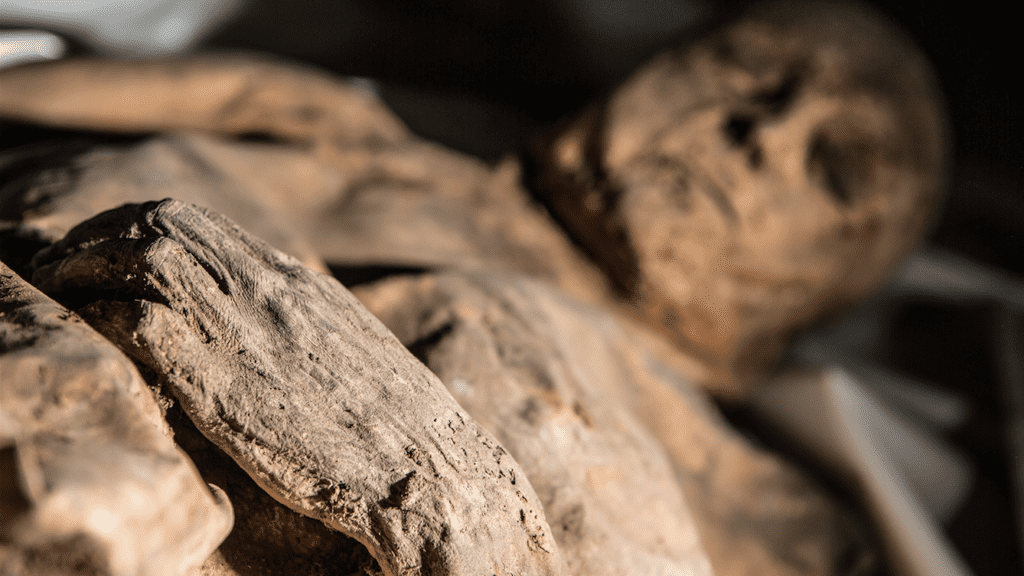
The earliest infected person with smallpox we know of is a child who lived in Lithuania around 1665. The mummified remains were discovered in a crypt under a church and inside the tissue, researchers found smallpox DNA which they sequenced. The findings suggest that smallpox originated far earlier than previously believed.
A sneaky virus
Thanks to global vaccination efforts, smallpox was completely eradicated in the 1970s. Before the advent of vaccines, however, the virus killed millions of people. When European settlers first arrived in North and South America, they simply plowed through the native populations aided by the new disease they brought with them.
Today, the virus can only be found in safely stored containers in labs around the world. Yet, despite the fact that smallpox has been eradicated, we still don’t know the whole picture, like where it came from.
Most viral infections originate in animals. For instance, HIV/AIDS originated from chimps and other primates and is thought to have first infected humans at least a century ago. The origin of Ebola and Zika can also be traced to primates and monkeys. Malaria comes from mosquitoes while swine-flu is self-explanatory. Smallpox, however, seems to be a ‘human thing’. It infects no other animal and if it did appear first in an animal (other types of pox do, like camelpox) we don’t know who that animal is.
“Scientists don’t yet fully comprehend where smallpox came from and when it jumped into humans,” says evolutionary geneticist Hendrik Poinar, senior author of the study, director of the McMaster Ancient DNA Centre and a researcher with Michael G. DeGroote Institute of Infectious Disease Research. “This research raises some interesting possibilities about our perception and age of the disease.”
Poinar and colleagues were on the lookout for ancient pathogens that lurk across the millions of Medieval tombs. They weren’t specifically looking for smallpox, but were very happy they found it in such old remains. It’s the earliest evidence of smallpox anyone has found.
After they sequenced the virus’ DNA and determined its age, they compared the genome to those of more recent strains collected in the 1940s to 1970s. The phylogenetic analysis can trace evolutionary mutations back in time to the earliest common ancestor, essentially offering an estimate of when the virus first surfaced.

Previously, scientists used to believe smallpox first appeared thousands of years ago. Some have pointed to other mummies from ancient Egypt which bear pockmark scars. It wasn’t ever very clear because those marks could have been made by measles or chicken pox.
The new study establishes a much finer timeline of the virus’ origin. The analysis suggests the common ancestor to all strains of smallpox first appeared sometime between 1588 and 1645, as reported in Current Biology. It doesn’t seem like a coincidence that this period was marked by many smallpox outbreaks around Europe.
“This study sets the clock of smallpox evolution to a much more recent time-scale” said evolutionary biologist Eddie Holmes, a professor at the University of Sydney, Australia. “Although it is still unclear what animal is the true reservoir of smallpox virus and when the virus first jumped into humans.”
It’s likely that other strains of the smallpox-causing virus were live and kicking earlier than the one that infected the 17th-century child. To wind the clock even further back, scientists need to investigate more tombs — the older the better.
This is no mere scientific inquiry. Though smallpox is officially eradicated, it’s possible it can resurface. If it does, we need to be prepared to throw everything we have at it. Knowing how the virus, and others like it, first appeared will be extremely important.
“While smallpox was eradicated in human populations, we can’t become lazy or apathetic about its evolution — and possible reemergence — until we fully understand its origins,” says Ana Duggan, a post doctoral fellow in the McMaster Ancient DNA Centre.”






